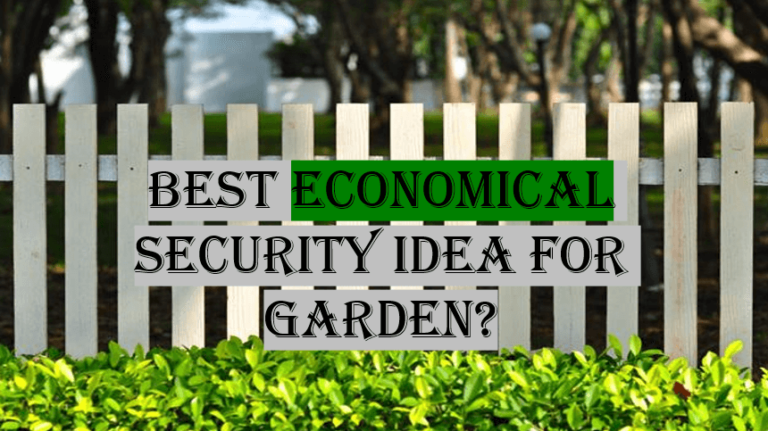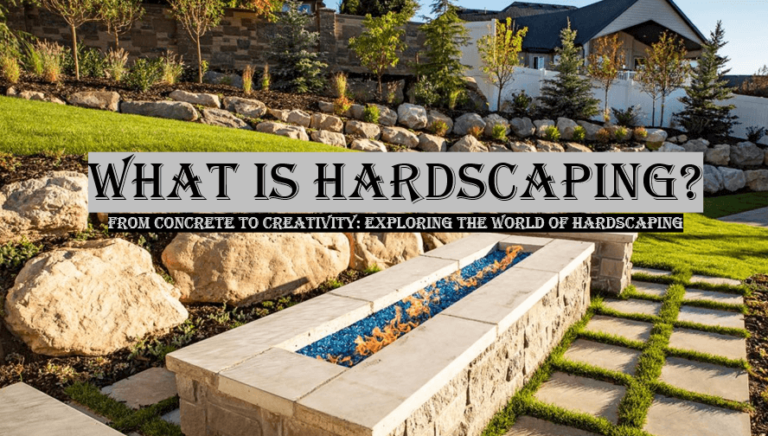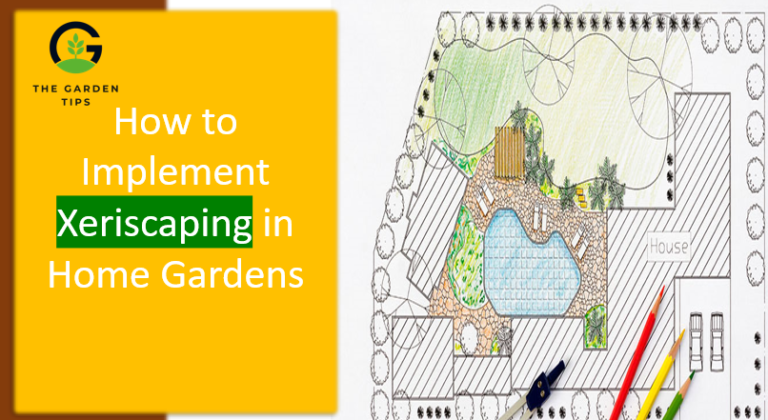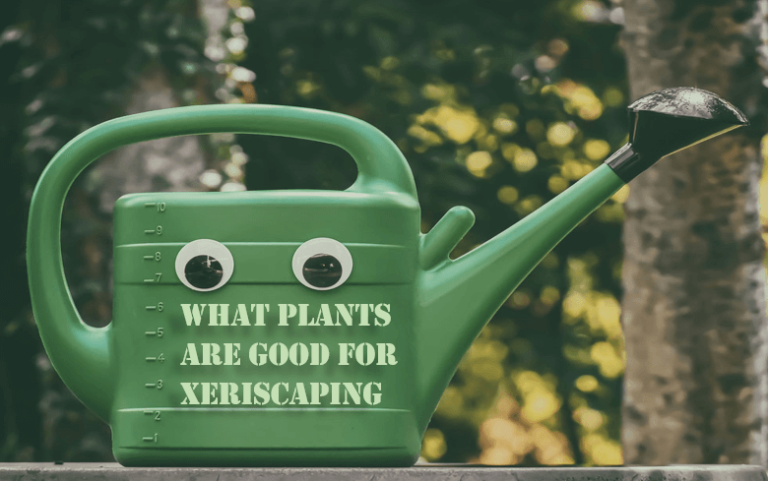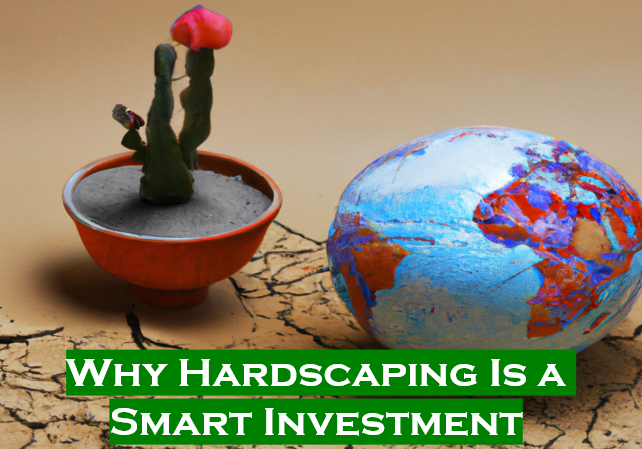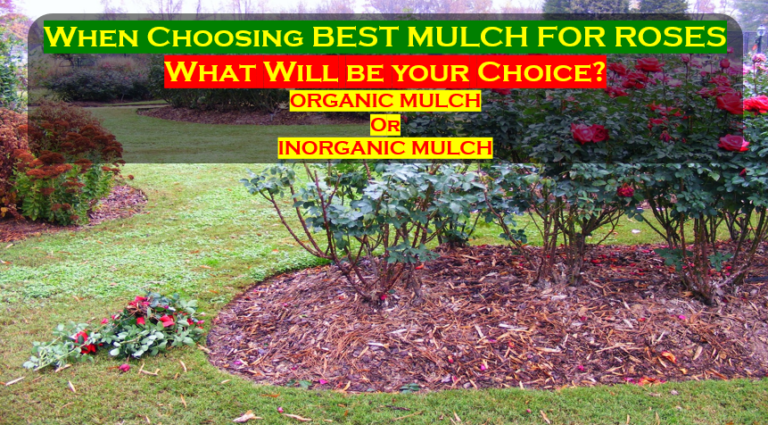A gardener uses any material to cover its soil to increase its garden’s first look or improve its soil structure is called mulch. Mulch plays a barrier between underneath soil and the harsh environment to protect the soil from direct sun rays, which helps to retain more moisture and regulate soil temperature.
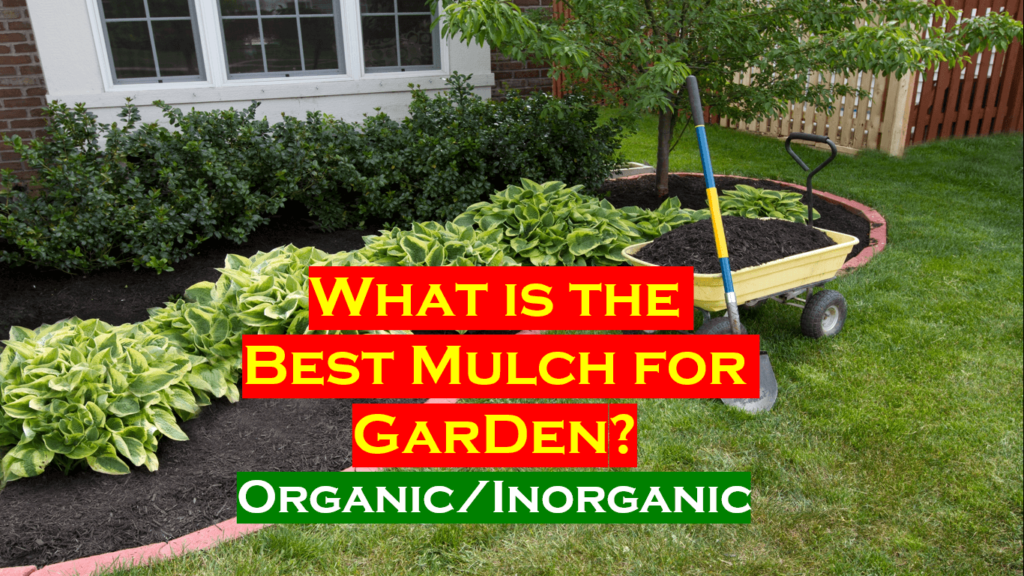
It suppresses the weeds as sunlight does not give a favorable temperature to grow buried seeds in the soil. Mulch also adds essential nutrients to the soil after passing through a decomposition process. It is a good insulator for the plants’ roots as they are not too hot in summer and don’t get too cold in winter.
Best Mulch for Your Garden
Mulch has two types: Organic and Inorganic.
Organic mulch
It is made up of natural sources like wood, compost, paper, clipping, and straws. This mulch can improve soil quality, soil health, and the overall look of your garden.
Precaution: Keep in mind that organic mulch does not contain seeds that exert negativity in your hard work.
Inorganic mulch
It is made up of artificial materials like pebbles, landscape fabrics, geotextile matting, plastic weed sheets/cloth, or rubber pellets. Inorganic mulches are often more expensive than organic mulches, but these types of mulches are long-lasting and look awesome in the garden.
Precautions: Mulching on a large area may increase the temperature of the soil. Rubber pellets may be harmful to plants.
Best Organic Garden Mulch
Organic or natural mulch has extraordinary benefits for your garden over inorganic mulch. Inorganic mulch’s three best mulches fit in the diversity of gardens.
- Hardwood Bark Mulch
- Old Hay
- Pine Straw
Hardwood Bark Mulch
Many want to provide a neutral to alkaline soil medium to grow plants in their gardens. Hardwood bark mulch is the best choice for them. It is decomposed rich mulch smells sweet, like black dirt. It is the best amendment option for your soil.
When you apply hardwood bark mulch to the soil, then microorganism works on it and starts to decompose it to make a part of the soil, which serve as a good nutrient source for microorganism, soil structure stability, and play a vital role in the healthy growth of plants.
Hardwood bark breaks down quickly and is replenished periodically to suppress weeds and conserve water. Wood chips or barks are used for pest repulsion. You will encourage more earthworms by using this mulch.
Limitations:
If you are using wood chips in your flower bed or garden, you will get a few years of benefits from this initiative, but fungus will grow in this garden, leading to a decline in your overall production. This issue will be observed in 2-3 years in a few environmental conditions.
Most vegetable gardens and flower beds need a 30:1 carbon-to-nitrogen ratio. If you use wood chips or barks, this ratio rapidly reaches 90:1, so you have to use other manures to stabilize this ratio.
Old Hay
Old hay is dirt cheap. Spoiled hay may kill farmers’ animals, but for gardeners, this spoiled hay is their asset. Spoiled hay is very cheap in price but bigger in volume. Old hay or spoiled hay prevents soil from splashing back from falling or rain. Old hay is a good form of organic matter; the soil needs more for its nutrient-cycling chain system in summer. Old Hay protects or covers plants sensitive to freezing temperatures and cold winds.
Limitation:
The main disadvantage of using hay is that it keeps seeds of many weeds, so if weed seed gets favorable conditions to grow in the garden, then your garden’s beauty effect badly. Weeds can compete with your main plant, which leads to reducing their production. Many weeds are the host plants for many harmful insects that disturb the good environment of your garden
It is hard to find and trust your source of hay. So if it contains any seed mixing, all your money is wasted. So find a good source or make your own.
Pine Straw
Pine straw has an aesthetic look over other mulches. Pine straw is available in different colors like brown and red muted tones. The color quality is somewhat red and brown, muted in tone, making it a useful addition to various landscapes.
It provides contrast, protects against weeds, and could give your property a unique look compared to everyone who uses a wood mulch product. Pine straw is easy and light in weight to spread in the garden compared to wood bark mulch. Pine straw mulch provides nitrogen, phosphorus, and calcium to the soil.
Limitations:
Pine straw mulch is slippery to handle and creates a highly acidic environment in the soil. If your plant is acid-loving, then pine straw is good for them. This mulch cannot be as effective in the control of weeds as other natural mulches. Pine straw mulch may enhance the chance of pests in the garden. Pine straw turns silvery or grayish color as it matures.
Inorganic Mulch
Inorganic mulches are materials that do not break down over time and are used for landscaping and horticulture purposes. Some types of inorganic mulch include:
Gravel or Rock
Gravel or Rock Flowers and landscape beds can benefit greatly from decorative rock mulches. Weeds are effectively suppressed when applied thickly or when plastic or fabric is used. Despite their high price tag, they rarely need to be repurchased or topped up. In contrast, rocks do not contribute any nutrients to the soil, nor do they help retain water. Because of rocks’ heat-absorbing and heat-reflecting properties, an area can become too warm and dry for several plants to survive.
Drought-resistant plants and areas devoid of vegetation are the perfect ones for rock mulch. Applying and working with it once laid off is difficult.
Plastic sheeting
It is a garden’s worst nightmare and must never be employed. Though each person’s tastes and preferences are unique, we can all agree on certain things. Synthetic or natural mulches are frequently used to cover plastic sheeting to make it look more attractive while suppressing weeds’ growth.
In addition, it will save you money because it will not need to be replaced frequently. Because plastic sheeting prevents water, air, and nutrients from reaching the soil, I wouldn’t say I like its use in gardens.
Since this is the case, it isn’t suggested for use across plants with large root systems, such as trees and shrubs. In addition, it prevents the soil from breathing and kills many beneficial organisms, such as worms and important microorganisms that reside beneath the soil. In the end, the soil is destroyed.
Landscape fabric
Good landscape fabric allows the soil to retain moisture, oxygen, and nutrients to keep weeds at bay. Synthetic or natural mulches are commonly used to enhance the landscape’s appearance. As a result, what are the drawbacks? If you use cheap landscape fabric, you may spend more money on replacements or additional weed control methods in the long run.
Rubber Mulch
Recycled tires are commonly used to make rubber mulch. A plus is the use of repurposed materials. Weeds are effectively suppressed, and soil moisture is retained by rubber mulch in some situations. As a bonus, it comes in a variety of colors. Because rubber mulch is soft and rubbery, it is ideal for playgrounds. Aside from that, rubber mulch toxicity is still being investigated. The most flammable type of mulch was rubber mulch. Unlike other soil amendments, this one doesn’t decompose and can stay in the ground for decades.
Inorganic Mulch Limitations
All types of inorganic mulches have limitations regarding their durability, potential for soil compaction, and environmental impact. For example, plastic mulches can take years to break down and contribute to plastic waste. Rubber mulch may contain harmful chemicals, and landscape fabric can restrict water and airflow to the soil.
Which Mulch is Best: Organic or Inorganic?
Organic Mulch Vs Inorganic Mulch
| Sr. # | Organic | Inorganic |
| 1 | Made from decomposing materials such as wood chips, leaves, grass clippings, and straw | Made from non-decomposing materials such as rock, rubber, plastic, landscape fabric, or bark |
| 2 | Improves soil structure and fertility by adding organic matter as it decomposes | It does not improve soil structure or fertility |
| 3 | Regulates soil temperature and moisture | It can help regulate soil temperature and moisture |
| 4 | Reduces weed growth | Reduces weed growth |
| 5 | Biodegradable and environmentally friendly | Long-lasting, but may contribute to soil compaction and may not be environmentally friendly |
Based on the above characteristics, organic mulch is generally considered the better choice for home gardens as it provides numerous benefits to the soil and plants and is eco-friendly.
Conclusion
In terms of which type of mulch is best for a home garden, it depends on the individual’s goals and preferences. If the goal is to provide a decorative cover and maintain soil moisture, inorganic mulches such as rock or rubber can be a good choice. However, organic mulches are a better option if the goal is to improve soil health and fertility.
Overall, organic mulches are generally considered the best choice for home gardens as they provide numerous benefits to the soil and plants and are eco-friendly.


